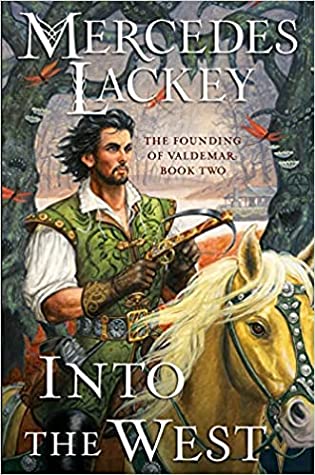 Into the West (The Founding of Valdemar, #2) by Mercedes Lackey
Into the West (The Founding of Valdemar, #2) by Mercedes Lackey Format: eARC
Source: supplied by publisher via NetGalley
Formats available: hardcover, paperback, ebook, audiobook
Genres: epic fantasy, fantasy
Series: The Founding of Valdemar #2, Valdemar (Publication order) #54, Valdemar (Chronological) #5
Pages: 496
Published by DAW Books on December 13, 2022
Purchasing Info: Author's Website, Publisher's Website, Amazon, Barnes & Noble, Kobo, Bookshop.org, Better World Books
Goodreads
The long-awaited founding of Valdemar comes to life in this second book in the new series from a New York Times-bestselling author and beloved fantasist.
Baron Valdemar and his people have found a temporary haven, but it cannot hold all of them, or for long. Trouble could follow on their heels at any moment, and there are too many people for Crescent Lake to support. Those who are willing to make a further trek by barge on into the West will follow him into a wilderness depopulated by war and scarred by the terrible magics of a thousand years ago and the Mage Wars. But the wilderness is not as empty as it seems. There are potential friends and rapacious foes....
....and someone is watching them.
My Review:
 We already knew the destination. What Valdemar is, what it became, seemed fully formed all the way back in Arrows of the Queen, which takes place almost 1400 years after the founding of Valdemar and was originally published in 1987. We’ve known the destination for a very long time.
We already knew the destination. What Valdemar is, what it became, seemed fully formed all the way back in Arrows of the Queen, which takes place almost 1400 years after the founding of Valdemar and was originally published in 1987. We’ve known the destination for a very long time.
This is the journey. Literally. Just as Beyond was the final push to start that journey, Into the West is the journey itself. Complete with all the cold, mud AND bugs that any adventure requires.
But, where Beyond was a story of running away, Into the West is a story about running towards.
As high as the stakes were, and still are, in the events that opened the way for Valdemar and his people to leave the corrupt Eastern Empire, the story itself built to a big climax – even bigger than Kordas Valdemar himself expected.
That part’s over. They’ve gotten away – at least for the moment. They believe that they left enough of a mess behind that it will take some time for the Empire to get its political shit into a big enough and unified enough pile to come after them.
Leaving a crater where the capital used to be should keep things back in the Empire in disarray for quite some time. At least until the surviving nobles and warlords and military commanders shake out which of them is going to be in charge and possibly charge after the fleeing Valdemarians.
If they can even find them after however much time that’s going to take.
So the big thing that everyone was working towards has been accomplished. Everyone was willing to unite towards that gigantic and hugely dangerous common goal. Into the West is the story of what happens next.
On the one hand, it’s an adventure. They are headed, as the title proclaims, into the west. To the place where the Mage Wars magically corrupted the land and everything on it centuries before. Kordas Valdemar knows that the land is still dangerous, but hopes that the intervening centuries have allowed the land to recover enough to make it habitable for his people.
On the other hand, it’s every bit as much of a political story as Beyond. But like the difference between running away and running towards that is the lynchpin of each book, Beyond’s portrait of the Eastern Empire was a lesson in what NOT to do and what NOT to be. It’s up to Baron Valdemar, the man who will be Valdemar’s first king, to figure out what his country and its people should do and will be in the centuries to come.
All they have to do is get past all the things and people that want to kill them along the way.
 Escape Rating B: If you’ve read Beyond – and I highly recommend it – Into the West picks up just where Beyond leaves off. That Valdemar and his people are now beyond the reach of the Empire and are headed into the west.
Escape Rating B: If you’ve read Beyond – and I highly recommend it – Into the West picks up just where Beyond leaves off. That Valdemar and his people are now beyond the reach of the Empire and are headed into the west.
Which makes this a much different type of story than the previous book – one that isn’t quite as exciting – but is very much necessary – in the opening several chapters.
The big story, of course, centers around Kordas Valdemar, the man who will be the first king of the country that will be named after him. If one has even read a cursory summary of the previous published books in the Valdemar series – which nearly all come AFTER this one in the internal chronology – one already knows that Kordas succeeded. He did become the legendarily good king that the history books talk about nearly a millennium later in The Last Herald-Mage series.
Which, by the way, doesn’t mean you have to have read any of the series previously in order to enjoy Beyond and Into the West. And certainly not that you have to have read any of them recently. Like even in this century recently.
But Into the West is the story of Kordas, not as a myth or a legend, but as a man facing a seemingly impossible job with an all-too-real case of impostor syndrome. He has to do this, He promised his people he’d do this. He’s in over his head and knows it – not that anyone wouldn’t be over their head under the circumstances.
He’s doing the best he can to make the best decisions he can to save not just the most people but the most people with the right ethics and the right moral compass along the way.
So this is the portrait of the legend as a real man, with all his flaws and all his virtues. And by the nature of that portrait, it is also an up close and personal view of how the sausage of government gets made.
For a lot of the story, their journey reads as more of a series of vignettes than a continuous narrative. While there are hints of the everyday drudgery of getting this mass of folks moving, the high points of the story naturally occur when things happen. Sometimes disastrously but just as often when conflicts are avoided or when kindness is paid forward and back along the way.
And then at the end they learn just what it is they’ve let themselves into – and it’s explosive and page-turning and even brutally epic.
But the getting there has a couple of hitches that Beyond didn’t, one which deals with the story in its present, and one which has its impact because of the future that is known but hasn’t happened yet. And one bittersweet heartbreaker to tempt us all to keep reading or go back and read again.
There’s a piece of Into the West that is a coming of age story for Kordas’ much younger sister-in-law Delia. In order to help her get over her entirely too obvious and cringeworthy crush on him, Kordas assigns her to a forward scouting party. It’s the making of her and gives the story a way of seeing the perils, trials and tribulations of this big journey at a much smaller and more easily encompassed scale. But her mooncalf obsession over Kordas really slowed the story down until she finally started to get over it.
The second hitch was the expedition’s winter rescue by the Hawkbrothers. As it occurs, it reads very much like a deus ex machina that shortcuts past a lot of what would have been a hard, killing winter even without the surrounding monsters. Once it happens, it does feel like something that had to have happened because it already did. It also provides a touching pause between disasters just before the newly fledged Valdemarians discover that their oh-so-convenient rescuers weren’t nearly as all-knowing as they pretended to be.
When Into the West wraps up after a truly epic concluding battle, the story is at a point where it could be the end of this Valdemar subseries. But I hope it isn’t, and that’s because of that bittersweet little heartbreaker at the end.
 The one signature feature of the entire Valdemar series that we do not see in either Beyond or Into the West are the marvelous, magical, horse-like Companions who serve as guides, friends and even consciences of the best and brightest that Valdemar the country has to offer. But I think we’ve met the people who will become them, and in a scene that just about breaks the heart we get just a hint of what depth of love and kind of sacrifice was needed to make the Companions possible. And I want there to be a third book in the Founding of Valdemar so I can find out if I’ve guessed right.
The one signature feature of the entire Valdemar series that we do not see in either Beyond or Into the West are the marvelous, magical, horse-like Companions who serve as guides, friends and even consciences of the best and brightest that Valdemar the country has to offer. But I think we’ve met the people who will become them, and in a scene that just about breaks the heart we get just a hint of what depth of love and kind of sacrifice was needed to make the Companions possible. And I want there to be a third book in the Founding of Valdemar so I can find out if I’ve guessed right.
But in the meantime there’s a new collection of Valdemar stories, Shenanigans, that I’ll be reviewing next week followed by a new novel about Valdemar’s legendary gryphons, Gryphon in Light, coming this summer.

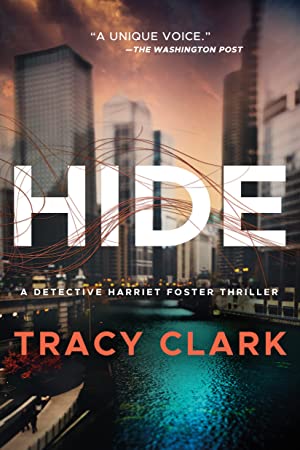 Hide (Detective Harriet Foster #1) by
Hide (Detective Harriet Foster #1) by 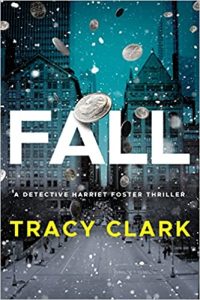 Hide is the first book in what looks to be a compelling mystery suspense series. While it isn’t officially out until January 1, it is available NOW to Amazon Prime members as one of the Amazon First Reads books this month. So if you are as impatient to read it as I was there is a way to get it this month.
Hide is the first book in what looks to be a compelling mystery suspense series. While it isn’t officially out until January 1, it is available NOW to Amazon Prime members as one of the Amazon First Reads books this month. So if you are as impatient to read it as I was there is a way to get it this month.
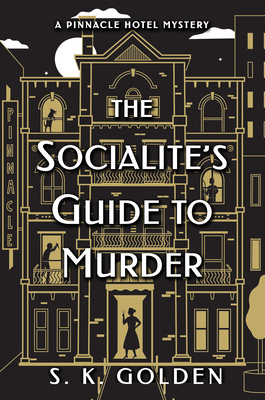 The Socialite's Guide to Murder by
The Socialite's Guide to Murder by 

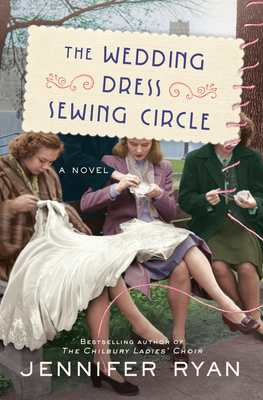 The Wedding Dress Sewing Circle by
The Wedding Dress Sewing Circle by  Escape Rating A: I was looking for, not exactly a comfort read as most of my comfort reads start with murder, but rather a comfortable read for the end of this week. It’s kind of surprising that led me to World War II, not exactly a comfortable time for ANYONE, but this actually fit the bill quite nicely. I adored one of the author’s previous books,
Escape Rating A: I was looking for, not exactly a comfort read as most of my comfort reads start with murder, but rather a comfortable read for the end of this week. It’s kind of surprising that led me to World War II, not exactly a comfortable time for ANYONE, but this actually fit the bill quite nicely. I adored one of the author’s previous books,  Mr. Clarke's Deepest Desire (Enterprising Scoundrels #2) by
Mr. Clarke's Deepest Desire (Enterprising Scoundrels #2) by  Escape Rating B+: One of the things that I really enjoy about the
Escape Rating B+: One of the things that I really enjoy about the 
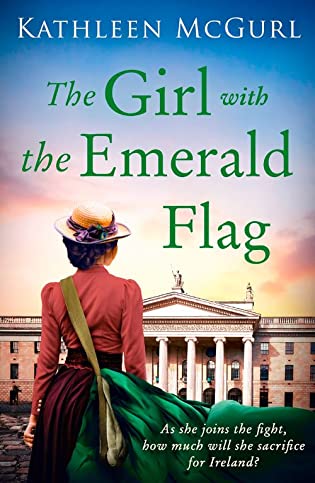 The Girl with the Emerald Flag by
The Girl with the Emerald Flag by 
 Kathleen McGurl lives near the coast in Christchurch, England. She writes dual timeline novels in which a historical mystery is uncovered and resolved in the present day. She is married to an Irishman and has two adult sons. She enjoys travelling, especially in her motorhome around Europe and has of course visited Ireland many times.
Kathleen McGurl lives near the coast in Christchurch, England. She writes dual timeline novels in which a historical mystery is uncovered and resolved in the present day. She is married to an Irishman and has two adult sons. She enjoys travelling, especially in her motorhome around Europe and has of course visited Ireland many times.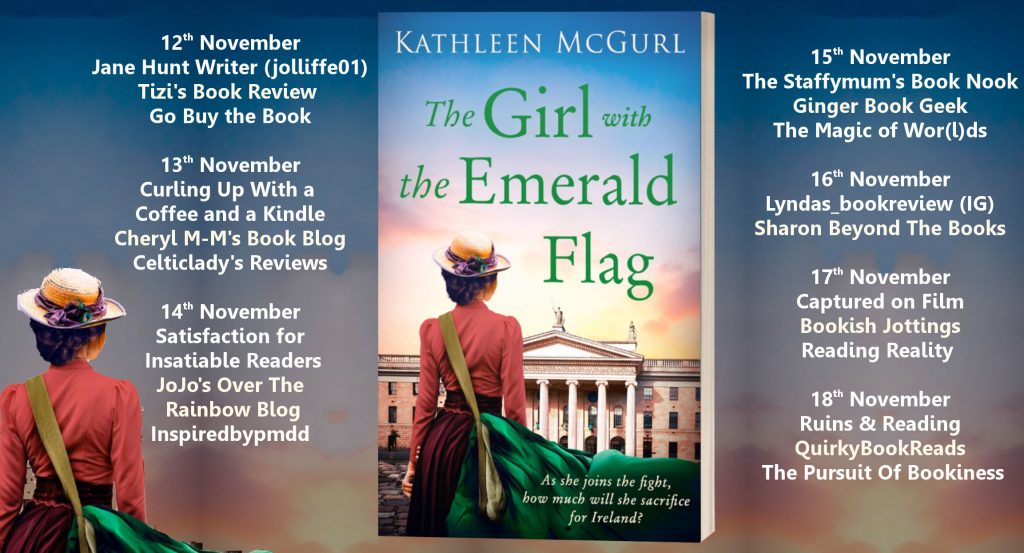
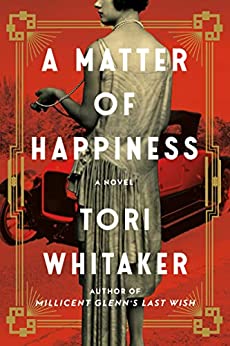 A Matter of Happiness by
A Matter of Happiness by 
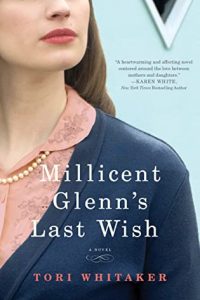 Escape Rating B+: I picked up A Matter of Happiness because I loved the author’s first book,
Escape Rating B+: I picked up A Matter of Happiness because I loved the author’s first book,  When the Angels Left the Old Country by
When the Angels Left the Old Country by  Escape Rating A+: In the foreword, the publisher claims that they’ve been referring to this book as the “queer lovechild of Philip Roth and Sholem Aleichem” – which is a lot to live up to. I think it read as
Escape Rating A+: In the foreword, the publisher claims that they’ve been referring to this book as the “queer lovechild of Philip Roth and Sholem Aleichem” – which is a lot to live up to. I think it read as 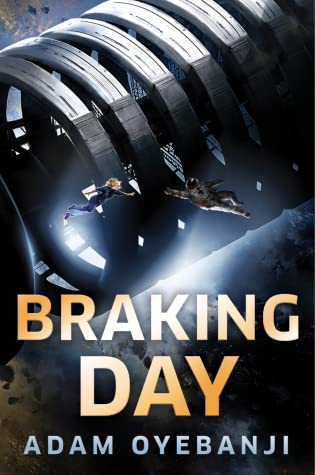 Braking Day by
Braking Day by 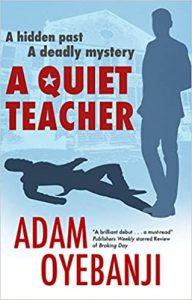 The question of whether the fleet will cripple itself, whether they and their old enemy will wipe each other out, or whether the cybernetic space dragons will decide that they are all collectively too stupid to live creates the kind of non-stop adventure that will keep readers on the edge of their seats even after the big, explosive climax.
The question of whether the fleet will cripple itself, whether they and their old enemy will wipe each other out, or whether the cybernetic space dragons will decide that they are all collectively too stupid to live creates the kind of non-stop adventure that will keep readers on the edge of their seats even after the big, explosive climax.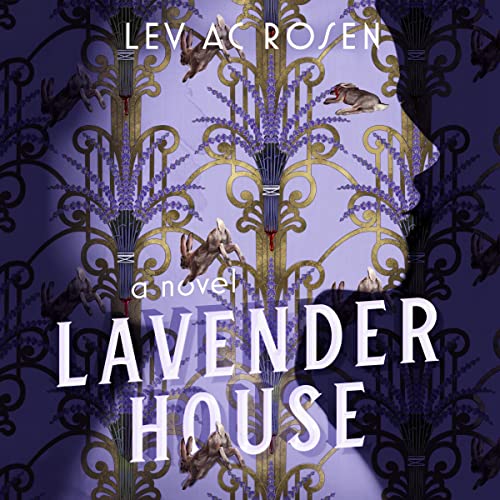 Lavender House (Evander Mills #1) by
Lavender House (Evander Mills #1) by 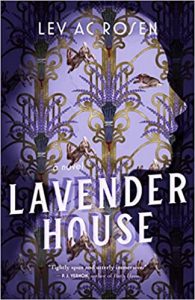 Escape Rating A+: There are so many ways to approach this story, and all of them work. Frankly, the story just works. It had me from that opening scene in the bar and didn’t let go until the bittersweet end. To the point where, as much as I LOVED the audiobook, I read the last third as text because I simply had to find out how it ALL worked out.
Escape Rating A+: There are so many ways to approach this story, and all of them work. Frankly, the story just works. It had me from that opening scene in the bar and didn’t let go until the bittersweet end. To the point where, as much as I LOVED the audiobook, I read the last third as text because I simply had to find out how it ALL worked out.